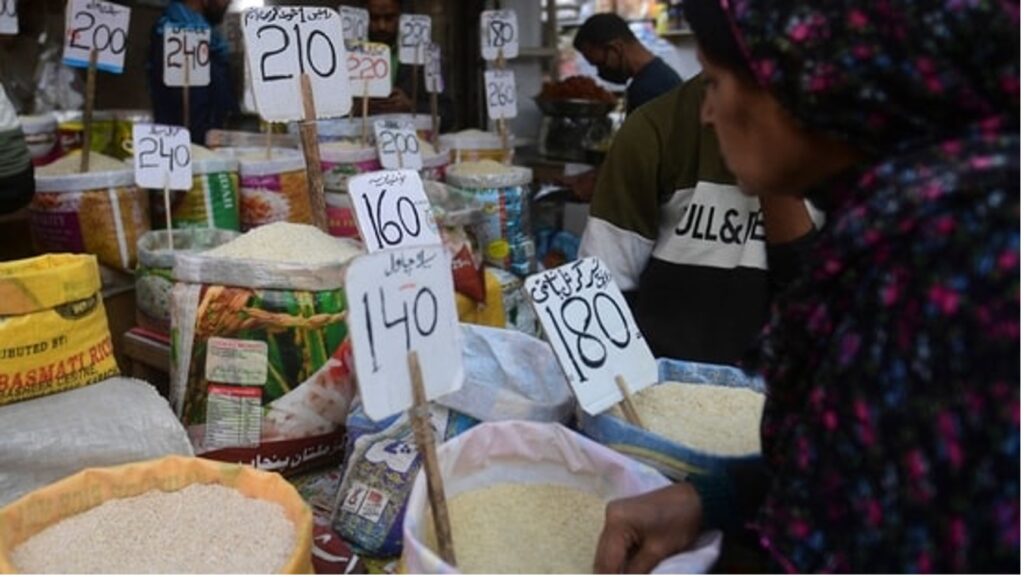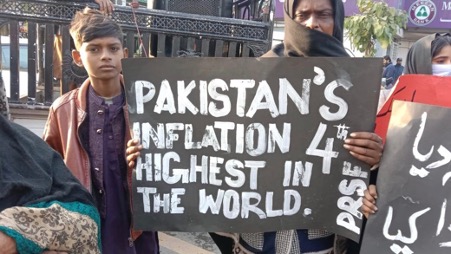8 PM is a rather early time to shut down markets across the country. But Pakistan’s government would beg to differ. It has been said that dire times need dire moves, and this saying cannot be a more accurate representation of the situation in Pakistan since 2022.
What started off in the May of 2022 with the government lifting the cap on fuel prices has now persisted in the form of an existential crisis for the nation. Political upheaval between former Prime Minister Imran Khan and the present Sharif government added to its dismay. The government had over the years been increasing its external borrowings to the level of default while causing the currency to fall and making imports highly expensive.
In the words of Federal Minister of Planning and Development Ahsan Iqbal, “Pakistanis must cut down their tea consumption to ‘one-two cups’ a day”, hence stressing the burden the imports and debts had on Pakistan’s balance of payments. The floods were the trigger to the impending.

The reasons accounting for Pakistan’s economic crisis are many.
Although the country has tried and tested out several forms of government – democracy, parliamentary democracy, and dictatorship – its structure of governance remains poor. Pakistan’s economy is tightly woven in the hands of a small elite circle. Their foreign policy for Pakistan seems to have cost the entire population heavily. External resources were often heeded since the time of independence.
Elites often resorted to dependence on these external resources instead of seeking out economic reforms that were tailored to the needs of the Pakistani populous. A sheer example of this is the China-Pakistan Economic Corridor, where Pakistan’s dependence on China is obvious. This bilateral arrangement lacked transparency to the Pakistanis themselves. For years, the government also adopted an anti-IMF stance. Another factor contributing to the economic downturn is Pakistan’s “support” for terrorism. The growth of terrorist organisations like Tehreek-e-Taliban Pakistan (TTP) has led them to turn against the Pakistani government itself.

As the economy battles to recover, Pakistan’s gross domestic product (GDP) growth is predicted to fall to 0.6% in FY2023 from 6% in the previous fiscal year. According to forecasts, growth will reach 2% in FY2024, provided that macroeconomic stability has returned, reforms have been put in place, the post-flood recovery is progressing, and external conditions are becoming better.
Export revenue, foreign direct investment, and remittance inflows from overseas workers are essential for Pakistan to pay back its debt and prevent a sovereign default. All three inflows, meanwhile, are expected to fall short of the import bill and the increasing need to repay debt. For instance, Pakistan’s export revenues and remittances totalled $164 billion during the past three years, but its imports of products totalled $170 billion. The likelihood that imports would exceed total exports and remittances during the subsequent three years will result in a current account deficit necessitating external finance. The IMF forecasted roughly $36 billion in exports over the years 2022–2033. An updated estimate of $28–29 billion has now been made, in part as a result of growing corporate costs and economic disruption brought on by the nation’s unpredictability.
Pakistan will also require a new IMF programme along with additional loans and rollovers from its Middle Eastern and Chinese partners, due to the load of its foreign debt over the next three years, in the event that the currently stalled IMF programme is resurrected and finished during the summer.
Another scenario is that Pakistan looks to pre-emptive debt restructuring. This will ease the burden of repayment and free up valuable resources in the economy to compensate for the nation’s current account deficit. To discuss restructuring possibilities, the Pakistani government has convened with investment banks and consultants. However, for the time being, authorities are reluctant due to the protracted and difficult restructuring process as well as the political reaction brought on by the corresponding austerity measures.

There are only two ways Pakistan’s economic leaders can reduce the country’s external debt. The first is to take out new loans and look into debt rollovers. However, Pakistan’s access to the market for sovereign funding is constrained as a result of downgrades by foreign credit rating agencies. Therefore, if Pakistani leadership hopes to prevent a default, it will rely on Middle Eastern allies as well as China for new loans as well as current rollovers. Pakistan’s discussions with the IMF will determine the precise amount it may request. The sum will be less if the stalled IMF programme is restored than it would be if the programme fails.
For instance, Pakistan’s export revenues and remittances totalled $164 billion during the past three years, but its imports of products totalled $170 billion. The likelihood that imports would exceed total exports and remittances during the subsequent three years will result in a current account deficit necessitating external finance. The IMF forecasted roughly $36 billion in exports over the years 2022–2033. An updated estimate of $28–29 billion has now been made, in part as a result of growing corporate costs and economic disruption brought on by the nation’s unpredictability.
On the domestic front, Pakistan plans on bringing in an extra Rs 170 billion in tax and non-tax income during the next four and a half months of this fiscal year, which ends on June 30. Other measures include raising the federal excise charge on tobacco products, the withholding tax rates on banking transactions to Rs. 45 billion, and the regulatory duty rates on luxury and non-essential imports. It is estimated that adding 1% to the general sales tax (GST) will generate an extra Rs 70 billion in four and a half months. Charges for electricity would go up by Rs 7.91 per unit over the course of four quarterly adjustments in 2023: February–March, March–May, June–August, and September–November. From June 2022 to June 2023, the consumer base pricing increased from Rs 15.28 per unit to Rs 23.39 per unit. The Government also discontinued a 65 billion rupee electricity subsidy given to exporters.
However, the Economic Coordination Committee (ECC) authorised a technical extra grant for the defence ministry in the amount of Rs 450 million, suggesting that the nation would continue to spend on defence even when the economy was in severe circumstances. This indicates that no matter what any financial experts or institutions advise, the root of this problem lies in the direction the elites are guiding Pakistan into.
Written by – Sahana P Valsang
Edited by – Khalid Khursheed
